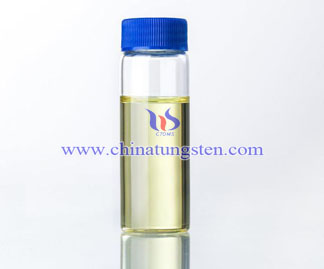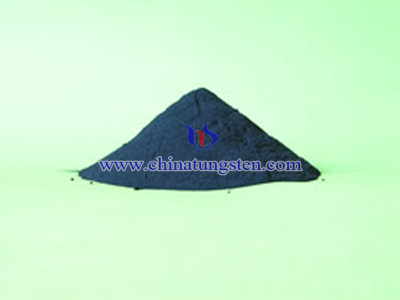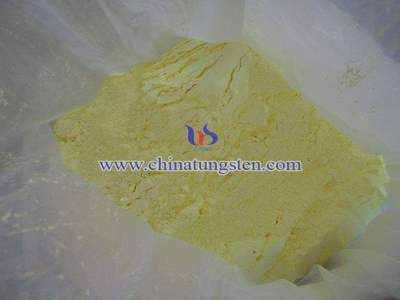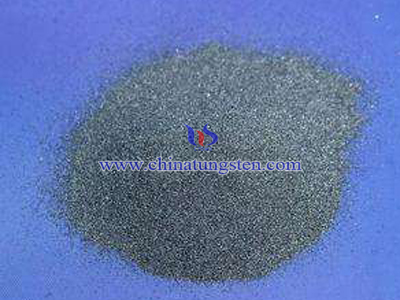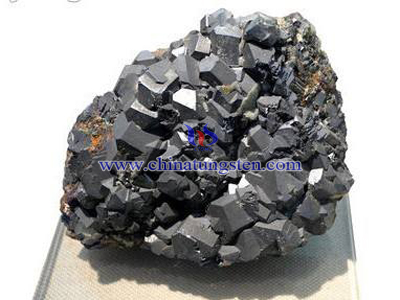Tungsten(VI) Fluoride
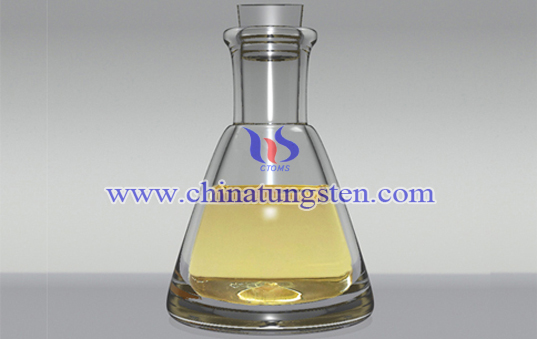
Tungsten(VI) fluoride, also known as tungsten hexafluoride, is the inorganic compound of tungsten and fluorine with the formula WF6. This corrosive, colorless compound is a gas under standard conditions, with a density of about 13 g/L (roughly 11 times heavier than air.), WF6 is one of the heaviest known gases under standard conditions. WF6 gas is most commonly used in the production of semiconductor circuits and circuit boards through the process of chemical vapor deposition – upon decomposition, molecules of WF6 leave a residue of metallic tungsten. This layer serves as low-resistive metallic "interconnect".
Properties
At ambient pressure and temperatures above 17 °C, tungsten hexafluoride is a colorless diamagnetic gas. The WF6 molecule is octahedral with the symmetry point group of Oh. The W–F bond distances are 183.2 pm. Between 2.3 and 17 °C, tungsten hexafluoride condenses into a pale yellow liquid having the density of 3.44 g/cm3 at 15 °C. At 2.3 °C it freezes into a white solid having a cubic crystalline structure, the lattice constant of 628 pm and calculated density 3.99 g/cm3. At −9 °C this structure transforms into an orthorhombic solid with the lattice constants of a = 960.3 pm, b = 871.3 pm, and c = 504.4 pm, and the density of 4.56 g/cm3. In this phase, the W–F distance is 181 pm, and the mean closest intermolecular contacts are 312 pm. Whereas WF6 gas is one of the heaviest gases, with the density exceeding that of the heaviest elemental gas radon (9.73 g/L), the density of WF6 in the liquid and solid state is rather moderate. The vapor pressure of WF6 between −70 °C and 17 °C can be described by the equation
log10 P = 4.55569 − (1021.208 / (T + 208.45)),
where the P = vapor pressure (bar), T = temperature (°C).
Synthesis
Tungsten hexafluoride is commonly produced by the exothermic reaction of fluorine gas with tungsten powder at a temperature between 350 and 400 °C:
W + 3 F2 → WF6
The gaseous product is condensed and separated by distillation from WOF4, a common impurity. In a variation on the direct fluorination, the metal is placed in a heated reactor, slightly pressurized to 1.2 to 2.0 psi (8.3 to 13.8 kPa), with a constant flow of WF6 infused with a small amount of fluorine gas.
The fluorine gas in the above method can be substituted by ClF, ClF3 or BrF3. An alternative procedure for producing tungsten fluoride is to react tungsten trioxide (WO3) with HF, BrF3 or SF4. Tungsten fluoride can also be obtained by conversion of tungsten hexachloride:
WCl6 + 6 HF → WF6 + 6 HCl or
WCl6 + 2 AsF3 → WF6 + 2 AsCl3 or
WCl6 + 3 SbF5 → WF6 + 3 SbF3Cl2
Reactions
On contact with water, tungsten hexafluoride gives hydrogen fluoride (HF) and tungsten oxyfluorides, eventually forming tungsten trioxide:
WF6 + 3 H2O → WO3 + 6 HF
Unlike some other metal fluorides, WF6 is not a useful fluorinating agent nor is it a powerful oxidant. It can be reduced to the yellow WF4.

